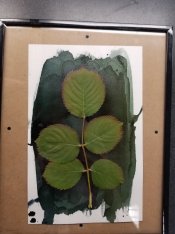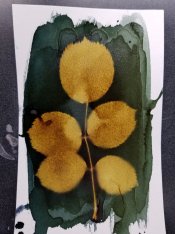10mwboyle
Member
So I tried making a cyanotype today for the first time and got pretty poor results so I'm trying to figure out what I'm doing wrong.
The recipe I used to mix the chemicals came from "The Book of Alternative Photographic Processes" by Christopher James. The recipe is as follows:
Cyanotype Stock A
200g ferric ammonium citrate
1000ml distilled water
Cyanotype Stock B
80g potassium ferricyanide
1000ml distilled water
I let the two solutions sit for 24 hours then mixed them, then coated a sheet of watercolor paper with a paint brush, creating three coats of the solution.
Then I lay a leaf over the watercolor paper and exposed it on a UV light table for 25 minutes.
When I went to rise the paper the image simply washed away in the water. I used distilled water to rinse the paper and it totally disappeared. I've attached some images of how the process looked. Any ideas where I'm going wrong here?
The recipe I used to mix the chemicals came from "The Book of Alternative Photographic Processes" by Christopher James. The recipe is as follows:
Cyanotype Stock A
200g ferric ammonium citrate
1000ml distilled water
Cyanotype Stock B
80g potassium ferricyanide
1000ml distilled water
I let the two solutions sit for 24 hours then mixed them, then coated a sheet of watercolor paper with a paint brush, creating three coats of the solution.
Then I lay a leaf over the watercolor paper and exposed it on a UV light table for 25 minutes.
When I went to rise the paper the image simply washed away in the water. I used distilled water to rinse the paper and it totally disappeared. I've attached some images of how the process looked. Any ideas where I'm going wrong here?














